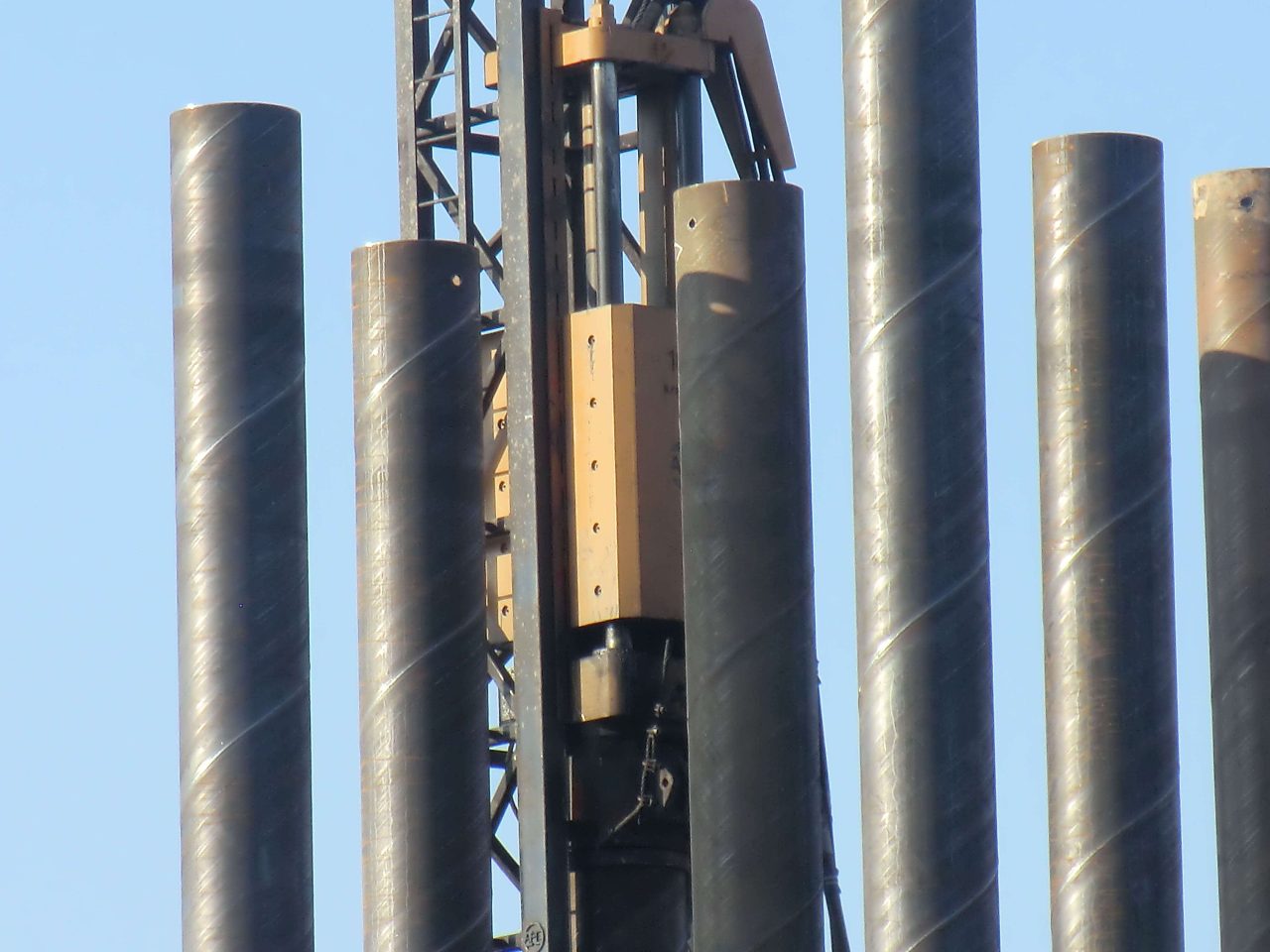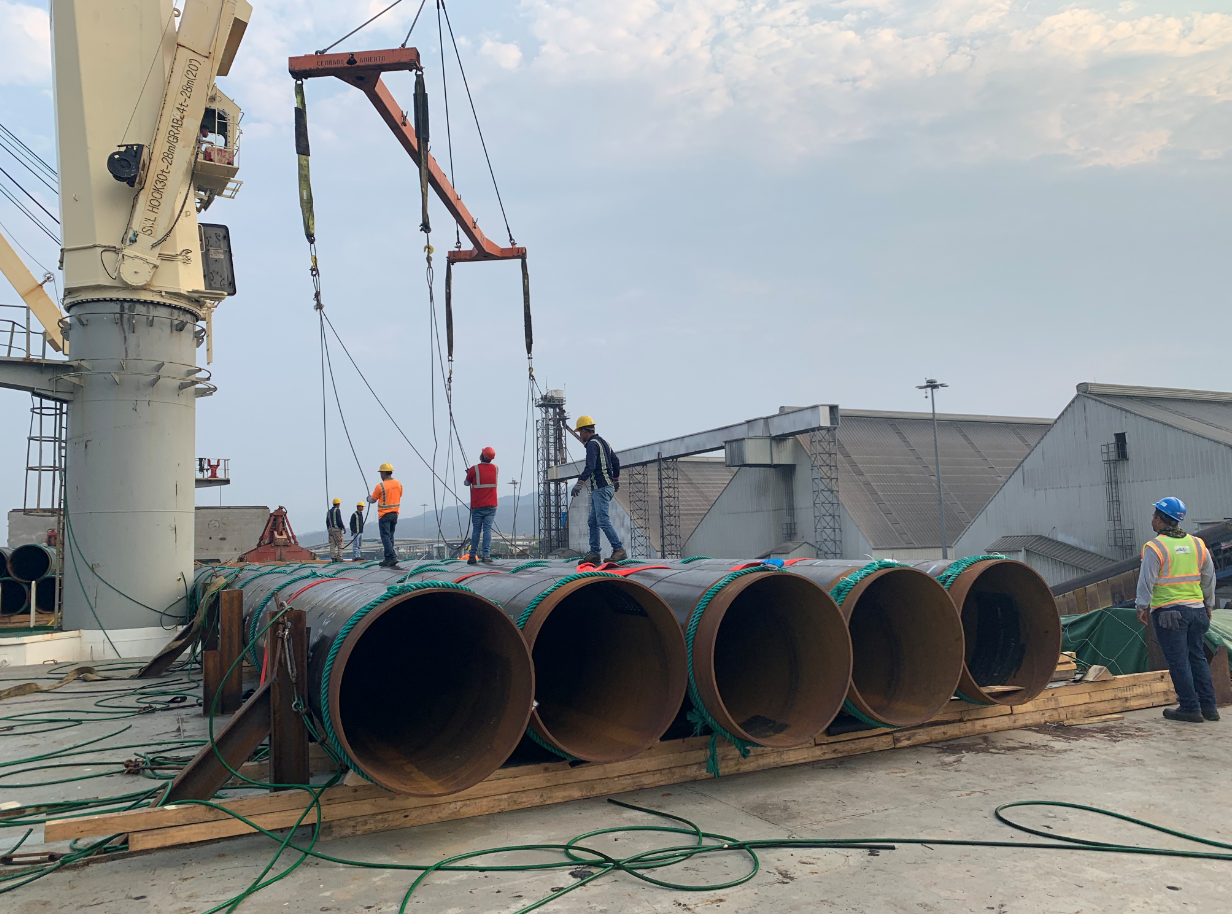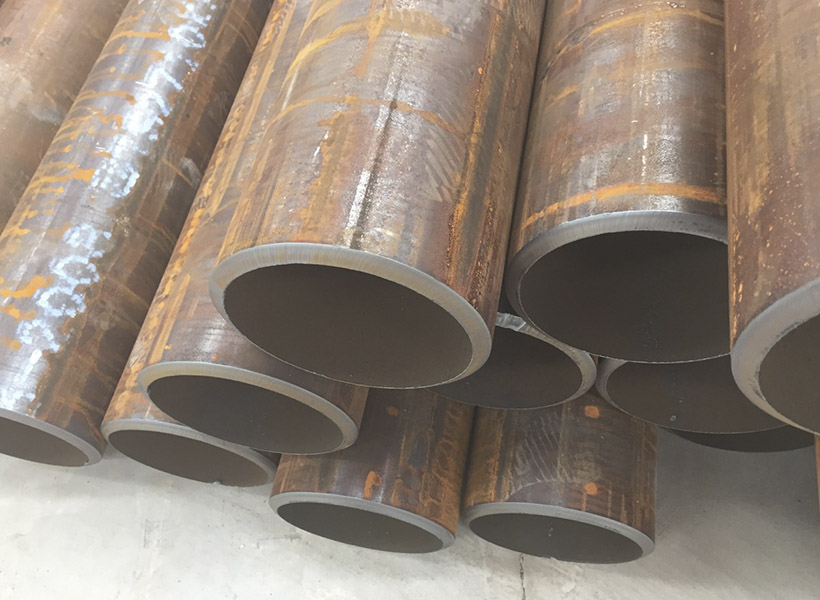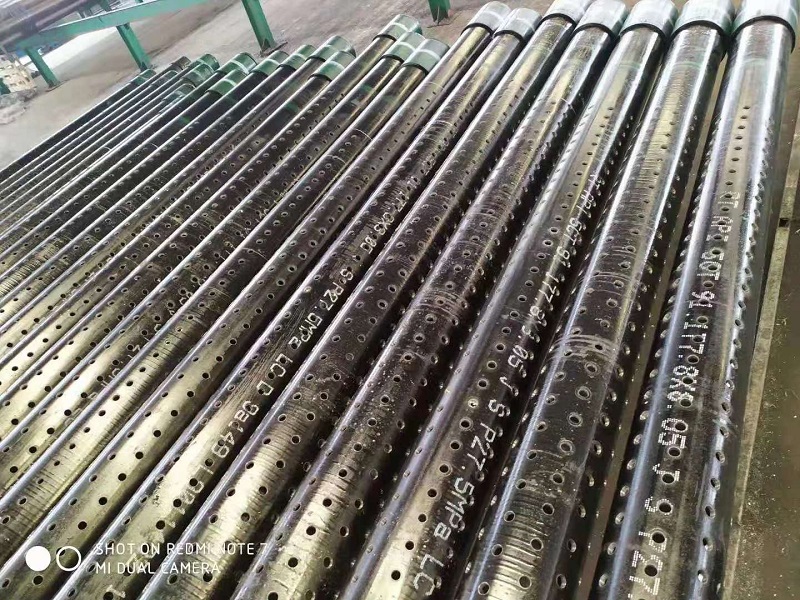The genesis of the water well screen, particularly the highly engineered stainless steel variant, is rooted in a fundamental necessity of hydrogeology: to create a stable, efficient, and long-lasting connection between a man-made borehole and the water-bearing geological formation, known as the aquifer, a task that demands a component capable of performing a complex, dual function—it must act as a rigid, structural lining to prevent the collapse of the unconsolidated aquifer material into the well shaft, while simultaneously serving as a sophisticated, permeable filter that permits the free, unrestricted ingress of water while meticulously excluding the fine, abrasive sediment, silt, and sand particles that would otherwise clog the well, damage the pumping equipment, and compromise the overall integrity of the water source, thereby transforming a raw excavation into a viable, productive asset. The choice of stainless steel, specifically the corrosion-resistant alloys like Type 304 and the more robust Type 316, is a critical engineering decision, reflecting a profound understanding of the subterranean environment where a well screen must operate under conditions of extreme mechanical stress, relentless chemical attack, and persistent microbial activity, making the material’s inherent resistance to uniform corrosion, pitting, and crevice corrosion—challenges exacerbated by the presence of chlorides, low pH, or high dissolved oxygen concentrations in groundwater—an indispensable quality that ensures a service life measured in decades rather than years, justifying the initial investment through vastly superior durability and minimized lifecycle maintenance costs, a testament to the fact that in well construction, material science is directly linked to operational sustainability and water security. The dominant and most technologically advanced form of this component is the wire-wound or continuous slot screen, a structure that is far removed from simple perforated pipe, meticulously fabricated by precisely winding a specialized V-shaped profile wire around an array of longitudinal support rods, a process of welding and precision alignment that creates continuous, uniform openings, or slots, whose size is carefully chosen to match the grain size of the surrounding formation or the intentionally placed filter pack material, and this unique V-shape is the key to its renowned non-clogging attribute, as the slot widens inward, ensuring that any particle that manages to enter will not bridge or jam, but will continue to pass through or be encouraged to stay outside, thereby maximizing the screen’s open area—a measure of permeability and flow capacity—a design philosophy that is essential for minimizing head loss, reducing flow velocity at the screen face (a factor that minimizes mineral precipitation), and ensuring that the well can sustain high pumping rates with maximum hydraulic efficiency. This intricate structure is not merely a filter but a meticulously engineered hydraulic control device, a critical nexus between the hidden flow of groundwater and the vital supply required by human activity, necessitating a manufacturing standard that prioritizes precision, material integrity, and long-term subterranean resilience.
Despite the highly engineered, non-clogging V-slot design and the inherent chemical resilience of stainless steel, the relentless physical and biogeochemical processes within the aquifer inevitably lead to the phenomenon of well screen plugging or encrustation over time, an operational challenge that is universal in groundwater production and requires a detailed, evidence-based approach to remediation, rather than a generalized, potentially damaging intervention, as the nature of the fouling dictates the appropriate, precise countermeasure. The observable symptom of plugging—a measurable decline in the well’s specific capacity (the ratio of flow rate to drawdown), an increase in pump energy consumption, or a decrease in the overall yield—is merely the tip of the iceberg, masking the complex chemical reactions and biological colonization occurring right at the critical screen-aquifer interface, a microscopic battleground where dissolved solids and living organisms concentrate due to pressure changes and water velocity reductions induced by pumping. Addressing this decline requires a systematic approach that begins with Diagnosis—the meticulous identification of the fouling agent—and progresses through targeted Cleaning and final Development, a phased strategy designed to restore the original hydraulic efficiency without compromising the structural integrity of the stainless steel screen or the surrounding formation. When fouling is confirmed, the remediation options bifurcate into two primary categories: Chemical Treatments and Mechanical/Physical Agitation, and the selection and sequencing of these techniques are paramount to success; for instance, if the diagnosis confirms mineral encrustation—such as calcium carbonate scale, which forms when pressure drops cause dissolved carbon dioxide to degas, precipitating the hardness minerals—the appropriate chemical weapon is a precisely formulated acid treatment, typically using inhibited hydrochloric or sulfamic acid, designed to dissolve the scale without corroding the stainless steel components, a process that requires careful monitoring of contact time, temperature, and concentration to achieve complete dissolution. Conversely, if the well is suffering from a massive infestation of Iron-Related Bacteria (IRB) or Sulfate-Reducing Bacteria (SRB), which create tenacious, water-impermeable biofilms and mineral-laden slimes, the first line of attack must be an aggressive oxidation treatment utilizing strong biocides like stabilized chlorine (sodium hypochlorite) or hydrogen peroxide, specifically chosen to penetrate the protective extracellular polymeric substances (EPS) of the biofilm, kill the organisms, and break down the organic matrix before any mineral component can be tackled; following either chemical treatment, a vital subsequent step is Mechanical Agitation—employing techniques like surging with a swab, high-energy sonic pulsing, or powerful jetting tools—to physically break loose the residual, softened, or dispersed fouling material from the V-slots and vigorously flush it out of the well system, ensuring that the expensive chemical effort is not wasted on material that simply settles back onto the screen face, thereby emphasizing that the most successful well rehabilitation is not a single action, but a coordinated, sequential deployment of chemical specificity and physical force, tailored precisely to the unique pathology of the clogged well screen.
The absolute prerequisite for any successful well rehabilitation—the step that transforms a costly guess into a strategic intervention—is the detailed, forensic process of determining what specific material is plugging the stainless steel well screen, a phase that relies on integrating advanced field observation with rigorous laboratory analysis to create a precise profile of the enemy, which is vital because a treatment effective against biological slime will be largely ineffective against hard silica scale, and vice versa. This diagnostic journey fundamentally begins with Performance Trend Analysis and Baseline Data Review, where the current, degraded pumping metrics (flow rate, drawdown, specific capacity) are meticulously compared against the well’s original acceptance test data and periodic monitoring logs, immediately flagging the rate and nature of the decline and providing initial clues as to the likely culprit—a rapid decline often suggests chemical scaling or a sudden biological event, while a gradual, long-term decline might point toward chronic sediment packing or slow mineral precipitation, an essential context-setting exercise. However, the most immediate and visually compelling evidence is obtained through Downhole Video Logging, a non-destructive investigative technique where a specialized, high-resolution camera is lowered into the well, allowing the operator to visually examine the entire screen interval in real-time, providing an unvarnished view of the blockage—the camera can confirm the location of the fouling (is it uniform, or localized to certain depths?), reveal the texture (is it a hard, white crystalline coating, a black, gritty deposit, or a reddish-brown, slimy growth?), and assess the severity of the slot closure, information that is invaluable for guiding the next phase of sampling and treatment application depths, essentially providing a map of the subterranean problem. Following this visual confirmation, the most crucial step is the Collection and Analysis of Physical Samples, involving the use of specialized tools, such as scrapers or modified bailers, to retrieve actual samples of the encrusting material adhering to the screen, as well as the sediment and scale settled in the well bottom, which are then transported to a certified laboratory for detailed chemical and biological interrogation. In the lab, the material undergoes Mineralogical Analysis (often utilizing X-ray Diffraction or quantitative wet chemistry) to confirm the presence and concentration of inorganic scale components, such as calcium carbonate ($\text{CaCO}_{3}$), iron oxides ($\text{Fe}(\text{OH})_{3}$), manganese oxides, or silica, while concurrently, Microbiological Assays are performed using specialized media to culture and quantify the problematic microbial populations, including Iron-Related Bacteria (IRB), Sulfur-Reducing Bacteria (SRBs), and slime-forming heterotrophs, thereby providing the definitive, multi-faceted identification of the plugging agent—a process that might reveal a complex, mixed fouling condition, such as a tenacious biological biofilm matrix that has sequestered and cemented iron oxide particles within its structure, demanding a dual-action chemical approach that addresses both the organic and inorganic components sequentially or simultaneously, ensuring the final remediation plan is not only effective but surgically precise.
The comprehensive strategy for managing and mitigating the inevitable plugging of a stainless steel well screen thus necessitates a deep dive into the two primary, yet distinct, categories of well fouling—inorganic mineral encrustation and organic biological fouling—understanding that while both reduce water flow, their origins, chemical compositions, and vulnerability to treatment are fundamentally different, requiring a highly tailored response to prevent treatment failure or, worse, irreversible damage to the well structure. Inorganic Encrustation is primarily a chemical precipitation problem driven by changes in pressure, temperature, or $\text{pH}$ as groundwater enters the low-pressure zone of the wellbore, with the most common culprits being Calcium Carbonate ($\text{CaCO}_{3}$), which precipitates readily from hard water upon $\text{CO}_{2}$ degassing, forming a hard, whitish scale that effectively armor-plates the screen slots, and Iron/Manganese Oxides/Hydroxides, which are often precipitated when ferrous iron ($\text{Fe}^{2+}$) in the groundwater is oxidized upon contact with oxygen in the well, forming voluminous, reddish-brown or black deposits that quickly clog the fine screen openings, each demanding a specific chemical attack. The $\text{CaCO}_{3}$ scale is highly susceptible to acid treatment (e.g., hydrochloric acid, $\text{HCl}$), which dissolves the mineral by lowering the $\text{pH}$ and converting the carbonate into soluble salts and $\text{CO}_{2}$ gas, a process requiring the use of corrosion inhibitors to protect the stainless steel screen during the prolonged soak period; conversely, iron and manganese oxides are far less soluble in simple acid and often require the addition of reducing agents (such as polyphosphates or specialized organic acids) to chemically reduce the metal back into its soluble ferrous ($\text{Fe}^{2+}$) state before it can be effectively pumped out of the well, showcasing the crucial need for pre-treatment analysis. In contrast, Organic or Biological Fouling presents a much more complex and recalcitrant problem, driven by the proliferation of specialized microorganisms—particularly Iron-Related Bacteria (IRB), which thrive on iron and create bulky, slimy deposits of $\text{Fe}(\text{OH})_{3}$ and tenacious exopolysaccharides (EPS), and Sulfate-Reducing Bacteria (SRBs), which live in anaerobic conditions, reduce sulfates, and produce highly corrosive hydrogen sulfide ($\text{H}_{2}\text{S}$) and black iron sulfide scale ($\text{FeS}$), a biological attack that not only clogs the screen but actively accelerates the corrosion of the steel itself. The treatment for biofouling must prioritize the use of potent oxidizing biocides—such as high-concentration chlorine (sodium hypochlorite), chlorine dioxide, or hydrogen peroxide—which are specifically designed to penetrate and destroy the protective biofilm matrix and kill the underlying bacteria, releasing the trapped mineral component, a crucial first step that must precede any mechanical agitation or acid wash, as attempting to acidify a live biofilm can sometimes harden the organic material, making it even more resistant to removal, thereby reinforcing the central tenet of well rehabilitation: the correct sequential application of targeted chemistry, informed by a definitive diagnosis, is the only sustainable path to restoring the stainless steel screen’s intended hydraulic efficiency and preventing premature well abandonment.
Once the precise nature of the plugging material—be it mineral scale, biological slime, or a combination thereof—has been definitively established through the integrated diagnostic protocol, the focus shifts entirely to the strategic execution of the well rehabilitation program, which must be a carefully orchestrated sequence of chemical application, soaking, physical agitation, and final development, recognizing that the choice of cleaning method must be specifically tailored to the stainless steel material itself, ensuring that the treatment is aggressive enough to remove the fouling but gentle enough to avoid permanent damage to the expensive screen component. The effective removal of mineral scales, particularly the stubborn iron and manganese oxides that frequently plague groundwater wells, often requires specialized Acid Treatment Blends that go beyond simple $\text{HCl}$; for iron fouling, a common and effective approach involves using inhibited $\text{HCl}$ fortified with powerful iron sequestering agents or chelants, which work to keep the iron in solution even after the acid is spent and the $\text{pH}$ begins to rise during the pump-out phase, preventing the immediate reprecipitation of iron hydroxides that would otherwise re-clog the screen and formation, a sophisticated chemical maneuver that maximizes the permanence of the cleaning effect, whereas the acid concentration and the duration of the soak are meticulously calculated based on the known volume of scale and the local hydrogeology to ensure the chemical fully penetrates the encrustation without unnecessarily long exposure times that could challenge the corrosion inhibitor’s efficacy. For tackling biofouling, the success of the Biocidal Treatment hinges on the initial concentration and distribution of the oxidizing agent—often achieved through circulation or cascading methods to ensure the entire screened zone and the surrounding formation receive the chemical dose—followed by a sufficient contact time to allow the biocide to penetrate the extracellular polymeric substances (EPS) matrix and achieve effective cell kill, but this treatment must always be followed by the rapid injection and agitation of a Dispersion Agent or a follow-up mild acid/surfactant wash to ensure the now-dead organic matter is fully mobilized and cannot simply settle back into the slots as a solid mass. The critical step linking the chemical treatment to the final restoration of flow is Mechanical Development and Agitation, where the softened or dispersed fouling material is physically driven out of the V-slots and away from the critical screen-aquifer interface; the preferred techniques utilize rapid pressure manipulation, such as Surging and Swabbing (rapidly moving a plunger up and down the screen to force water and debris in and out of the slots) or Pneumatic Surging (using controlled blasts of compressed air to create intense pressure waves), which are highly effective at mobilizing fine particulates and loosening residual scale from the stainless steel surface, all culminating in a final, sustained period of Test Pumping where the flow rate and water clarity are continuously monitored until the well water is clean and the specific capacity meets or exceeds the target, providing the definitive, measurable proof that the costly, complex process of well rehabilitation has successfully restored the stainless steel screen’s original high-performance hydraulic function, making the entire operation a high-stakes, rewarding exercise in integrated chemical and mechanical engineering.
Looking beyond immediate remediation, the long-term integrity and sustainable performance of the stainless steel well screen depend heavily on adopting a proactive monitoring and preventive maintenance program, shifting the focus from reactive, expensive crisis management to a continuous, predictive care regimen that recognizes well screen clogging as an inevitable, cyclical process rather than a final, abrupt failure. This proactive approach begins with the establishment of a Routine Monitoring Schedule, where the well’s specific capacity, water chemistry (especially $\text{pH}$, iron, and manganese concentrations), and microbiological activity are measured and logged at fixed intervals, typically quarterly or semi-annually, thereby allowing technicians to identify subtle, early-stage declines in efficiency or nascent increases in problematic chemical or biological indicators long before the well’s performance reaches a critical, operationally disruptive threshold; this data-driven vigilance allows for the implementation of Low-Concentration, Preventative Treatments, such as periodic, mild chlorination or the injection of sequestering agents, which can be deployed to suppress microbial growth or inhibit mineral precipitation at the first sign of trouble, effectively resetting the fouling clock without the need for the extensive drawdown and high chemical concentrations required for full-scale rehabilitation. The sophisticated material choice of stainless steel itself also mandates an ongoing commitment to Corrosion Management, particularly in environments where the water chemistry is known to be aggressive, such as high-chloride content or zones susceptible to SRB contamination, which can lead to localized, deep pitting corrosion or crevice corrosion—failures that even the most robust cleaning cannot repair—necessitating the use of specialized $\text{316L}$ grade stainless steel or the strategic use of corrosion inhibitors during any chemical cleaning to ensure the material integrity is preserved against the very agents used to clean it, a paradox inherent in well maintenance. Furthermore, the operational parameters of the pump must be continuously optimized to Minimize the Drawdown and Flow Velocity at the screen face, as excessive drawdown dramatically lowers the pressure, exacerbating mineral precipitation, while high flow velocities physically pull fine sediment particles into the screen openings and increase the abrasion risk, meaning that the simplest and most effective maintenance tool is often the careful adjustment of the pumping regime to maintain a sustainable, non-fouling flow rate that is compatible with the aquifer’s yield and the screen’s design, recognizing that the optimal lifespan of a stainless steel well screen is achieved not just through manufacturing excellence, but through the judicious and continuous management of the hydraulic and chemical conditions within the wellbore, transforming the practice of well ownership into a perpetual, data-informed partnership between the operator and the subterranean environment, ensuring the screen provides its intended service for its full design life.







